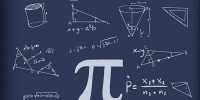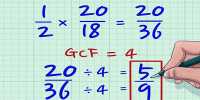A mathematical historian at Trinity Western University in Canada discovered that a Venetian merchant used a decimal point 150 years before German mathematician Christopher Clavius did. In his study published in the journal Historia Mathematica, Glen Van Brummelen discusses how he discovered evidence of decimal use in a volume named “Tabulae,” as well as its relevance to mathematical history.
The introduction of the decimal point resulted in the establishment of the decimal system, which allowed individuals working in a variety of disciplines to compute non-whole numbers (fractions) as readily as whole numbers. Before this discovery, the decimal point was first used by Christopher Clavius when developing astronomical tables, which were published in 1593.

The surprising finding was found in a document authored by Giovanni Bianchini in the 1440s—Van Brummelen was reviewing a portion of trigonometric tables with a colleague when he realized some of the numbers had a dot in the middle. Bianchini multiplied 10.4 by 8 in the same way that current mathematicians do. According to the findings, the use of a decimal point to indicate non-whole numbers originated around 150 years earlier than math historians had previously imagined.
Giovanni Bianchini spent several years as a trader in Venice before being recruited to an administrative position at a large estate held by the powerful d’Este family. He also handled assets and investments in this job, providing him a solid mathematical foundation. He also wrote astronomy textbooks, exhibiting his ability to trace planetary motion and forecast eclipses.
The discovery implies that Bianchini played a larger influence in forming mathematical basics than previously thought. Van Brummelen observes that, as a trader, Bianchini would have traveled frequently, including to regions in the Islamic world where arithmetic concepts were being established, which might have influenced his usage of non-whole numbers and more readily represented them.













